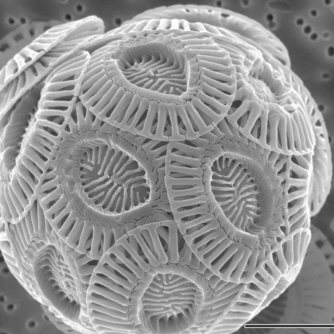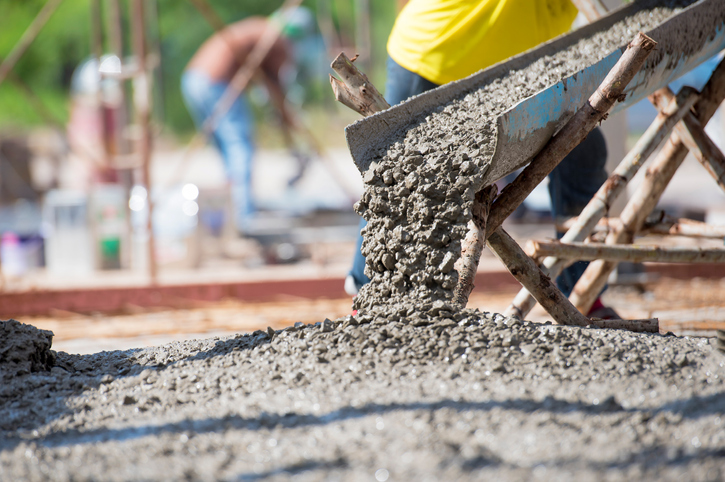We’ve heard the estimates for years now: Global cement production accounts for 7% of annual GHG (greenhouse gas) emissions. This figure comes in large part through the burning of quarried limestone. What if that number could be brought down, way down, to almost zero?
Concrete is one of the most common building materials, a staple of construction around the world. It starts as a mixture of water and portland cement, which forms a paste to which materials such as sand, gravel, or crushed stone are added. The paste binds the aggregates together, and the mixture hardens into concrete.
Academic researchers and companies around the world are working on alternative materials that can replace all or part of that formula to minimize or eliminate the carbon emissions. Specialized construction methods, mainly 3D construction printing, are seeking new substances for their “ink.” Researchers are combing the scientific literature and looking under every rock, even underwater rocks, for answers.
One novel approach was, indeed, found underwater. Engineers at the University of Colorado at Boulder and their colleagues at the UNCW (University of North Carolina Wilmington) and the NREL (National Renewable Energy Laboratory) have been working to develop and scale up the manufacture of biogenic limestone-based portland cement and help build a zero-carbon future.
The research team found that replacing quarried limestone with biologically grown limestone, a natural process that some species of calcareous microalgae complete through photosynthesis (just like growing coral reefs), creates a net carbon neutral way to make portland cement. In short, the carbon dioxide released into the atmosphere equals what the microalgae already captured.
With only sunlight, seawater, and dissolved carbon dioxide, these tiny organisms produce the largest amounts of new calcium carbonate on the planet, and at a faster pace than coral reefs. Coccolithophore blooms in the world’s oceans are so big, they can be seen from space.

These microalgae are hardy little creatures, living in both warm and cold, salt and fresh waters around the world, making them great candidates for cultivation almost anywhere—in cities, on land, or at sea. According to the team’s estimates, only 1 to 2 million acres of open ponds—0.5% of all land area in the U.S. and only 1% of the land used to grow corn–would be required to produce all of the cement that the U.S. needs.
By using biogenic limestone instead of quarried limestone as the filler, portland cement could become not only net neutral, but also carbon negative by pulling carbon dioxide out of the atmosphere and storing it permanently in concrete. According to their research, if all cement-based construction around the world was replaced with biogenic limestone cement, each year, two gigatons of carbon dioxide would no longer be pumped into the atmosphere and more than 250 million additional tons of carbon dioxide would be pulled out of the atmosphere and stored in these materials.
If concrete made like coral reefs isn’t in the immediate future, perhaps a land-based substitute is. Black Buffalo 3D, Alquist, and Revive Hemp Industries have committed to a collaboration, leveraging sustainable materials and joint R&D to create a structural hemp-based 3D construction ink. The joint venture begins at the farm with technology that creates a supply of industrialized hemp ingredients. Initial experiments with industrialized hemp have uncovered an ability to sequester tons of carbon with the potential to be a net-zero, environmentally friendly alternative to cement.
Black Buffalo 3D is the manufacturer of large-scale, 3D construction printers that are capable of printing structural components and buildings one-to-four stories high. Its materials science division is committed to standardizing construction materials and 3D inks to increase the acceptance of safe and sustainable 3D construction printing.
Alquist, as one of the first companies to adopt 3D construction printing, has taken the technology from concept to application by printing homes for families in Virginia, and they have hundreds more on the horizon. Meanwhile, Revive Hemp Industries provides the highest-quality, cost-effective, processed American industrial hemp. Revive will supply materials to be studied and integrated into a new form of sustainable ink, which can replace cement-based concrete used in 3D printing and traditional construction projects.
Want to tweet about this article? Use hashtags #construction #sustainability #infrastructure #futureofwork


